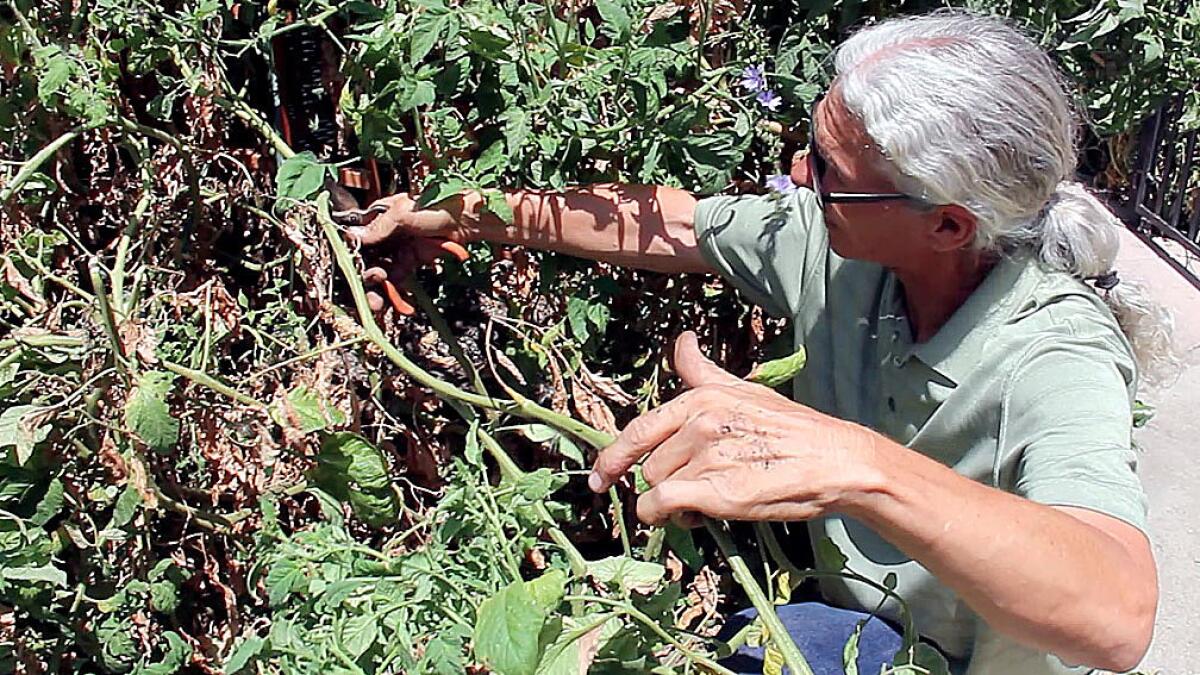Why you need to stop everything and prune your tomato plants right now

- Share via
So, it’s late summer and your tomato plants are a bulky mass of tangled vines, taking lots of room but providing little — if any — fruit.
Time to yank your plants?
Not at all, says certified organic grower Tom Yost of Carol Gardens in Riverside.
Southern California gardeners, who enjoy late frost dates, can encourage a second crop of tomatoes well into fall if they do some heavy pruning and feed their sprawling tomato plants, Yost said. (Unfortunately, this only works on indeterminate tomato plants, which grow like big, bushy vines. Determinate varieties are more compact, Yost said, and will not produce a second crop.)
All you need are some sharp pruning shears and twine or something to tie up your newly trimmed vines. Gloves are a good bet too, to protect against spiders or other critters lurking in the leaves.
Step 1: Assess the situation
Plan on pruning your vines one branch at a time, which will require some patient untangling. Yost recommends starting at the base of the plant and pulling out branches from there.
Step 2: Be ruthless
Examine each branch. If it doesn’t have any fruit or flowers, cut if off.
If the branch is producing, remove all the brown or yellowing leaves below the fruiting stems as well as any un-fruited auxiliary branches and sucker shoots.
Striping those lower branches may seem harsh, but it’s the best way to redirect the plant’s energy to fruit production instead of leaves and branches, Yost said. It also removes dying foliage where pests like to procreate and encourages better air circulation and light around the plant.
Step 3: Find support
Once you prune a branch, tie it up on a tomato cage or trellis. Don’t leave it lying on the ground.
Step 4: Tidy up
Clean up the area around the base of the plant, pulling weeds or other unwanted plants that might suck nutrients from the soil or shelter unwanted pests.
Step 5: Feed and water
Yost recommends loosening the soil around the plants and adding a quality organic fertilizer followed by some compost or mulch to protect the surface roots from the sun after pruning.
He uses a fertilizer with an N-P-K (nitrogen-phosphorus-potassium) of 1-3-7. “We want a low-nitrogen fertilizer with high phosphorus and potassium,” he said, “which will promote flower and fruit production, not the rampant growth that nitrogen will give us.”
Follow our gardening board on Pinterest
ALSO:
More Southern California gardening
10 secrets to growing the tastiest tomatoes
Have extra tomatoes? Try this summer tomato sauce recipe







